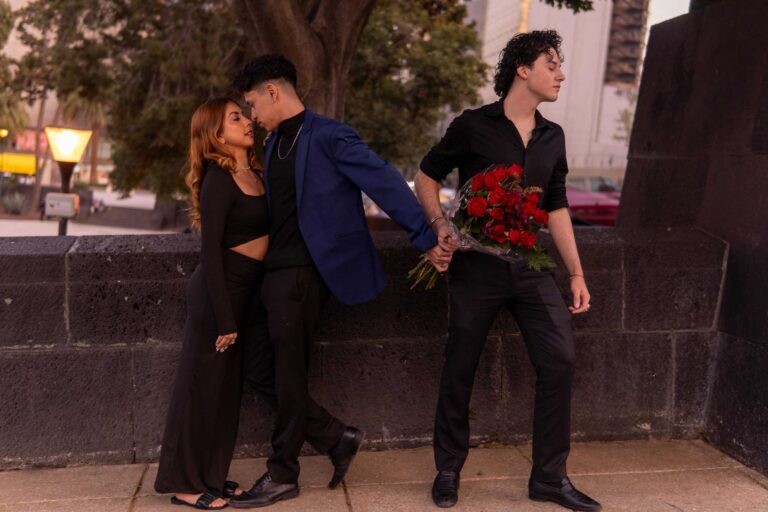Winter Cuffing Season: What It Is and What It Isn’t
Look, we’ve all been there. It’s mid-November, the temperature has finally decided to drop below “sweat-through-your-shirt” levels, and you’re feeling good. You’re independent. You’re thriving. But then, something shifts. You see the first Christmas decoration go up at the mall, or maybe you just get chilly waiting for an Uber. Suddenly, that urge hits you like a lag spike in a competitive shooter. You don’t want to be alone. You want a hoodie that isn’t yours. You want someone to split the cost of a large pizza with.
Welcome to cuffing season.
If you’ve been scrolling through TikTok or Twitter lately, you’ve probably seen the term cuffing season thrown around with reckless abandon. But if you’re sitting there wondering why everyone is suddenly scrambling to lock down a significant other before the first snow falls, you aren’t crazy. It’s a legitimate social phenomenon, and honestly, it explains a lot about the chaotic state of modern dating.
What Exactly Is Cuffing Season?
Let’s cut through the noise. Cuffing Season is that specific time of year when people who usually love their single life suddenly decide they’d rather be tied down. It’s the period where the desire for a “short-term partnership” outweighs the desire for freedom.
Usually, cuffing season kicks off right around the time you swap your iced coffee for a pumpkin spice latte—think late October or early November—and it runs until just after Valentine’s Day.
It isn’t necessarily about finding “The One.” It’s about finding “The One For Right Now.” It’s a roster draft for the winter months. The goal isn’t always marriage; often, it’s just having a reliable person to watch Netflix with when it’s too cold to go to the club. It’s a mutually assured destruction of loneliness. You get warmth and companionship; they get someone to drag to their office holiday party so they don’t look sad. Everyone wins, theoretically.
The Origin Story: It’s Not About The Police
Despite what the name suggests, nobody is getting arrested here (unless your date goes horribly wrong). The term “cuffing” comes from African-American vernacular, playing on the idea of “handcuffing” yourself to someone—basically, getting hitched or hooked up.
While the concept of winter romances is as old as time, the specific label “cuffing season” started popping up in college newspapers around 2011. It really hit the mainstream when the rapper Fabolous dropped a track about it in 2013. Since then, dating apps and social media have turned it into a full-blown annual event, complete with draft picks and preseason stats.
Why Do We Do This To Ourselves?
Is it biology? Is it peer pressure? Is it just because heating bills are expensive?
The science suggests it’s a mix of everything. When the sun goes down at 4:30 PM, our serotonin levels take a nose dive. This is basically the prime setup for the “Winter Blues” or Seasonal Affective Disorder (SAD). We feel grumpier and lonelier, and our brains trick us into thinking that a relationship is the cure-all for our seasonal depression.
Plus, let’s be real about the social pressure. The holidays are a gauntlet for single people. Nobody wants to sit at the Thanksgiving table and have Aunt Linda ask why you’re still single while your younger cousin introduces their new fiancé. Cuffing season is a survival strategy. Bringing a partner home—even a temporary one—is like wearing armor against intrusive family questions.
The Rules of The Game
If you’re going to participate in cuffing season, you have to know the meta. This isn’t standard dating; the rules are different.
- The Timeline is Key: You generally want to secure your prospect by Thanksgiving. If you’re still looking in late December, you’re fighting for scraps. The waiver wire is empty by then.
- Lower Your Standards (Just a Little): Cuffing season is about comfort, not perfection. You aren’t looking for a soulmate; you’re looking for someone who has a decent streaming subscription login and doesn’t chew with their mouth open.
- The “Netflix and Chill” Factor: This phrase was practically invented for this season. The dates aren’t about hiking or rooftop bars. They are about sweatpants, takeout, and binging an entire series in one weekend.
- The Expiration Date: This is the most important part. Most of these relationships have a built-in shelf life. Once the sun comes out in spring and you remember that the outdoors exists, the “uncuffing” begins.
Is It Actually Healthy?
Here is the million-dollar question. Is it healthy to date someone just because you’re cold and lonely?
Therapists and relationship experts are split. On one hand, humans crave connection. If you and your partner are on the same page that this is a casual, fun way to pass the winter, then go for it. It’s better than staring at a wall by yourself for four months.
However, it gets messy when the communication breaks down. If one person thinks they’re in a Hallmark movie and the other person is just trying to survive until March, someone is going to get hurt. It’s the classic “situationship” trap.
The Verdict
Ultimately, cuffing season is what you make of it. If you want to embrace the cringe, buy matching pajamas, and hibernate with someone for a few months, do it. It’s a weird, distinctively human way to cope with the fact that winter is miserable.
Just remember: when the snow melts, you might find yourself wondering what you actually have in common with this person other than a shared love for heated blankets. And that’s a problem for Future You to solve.







